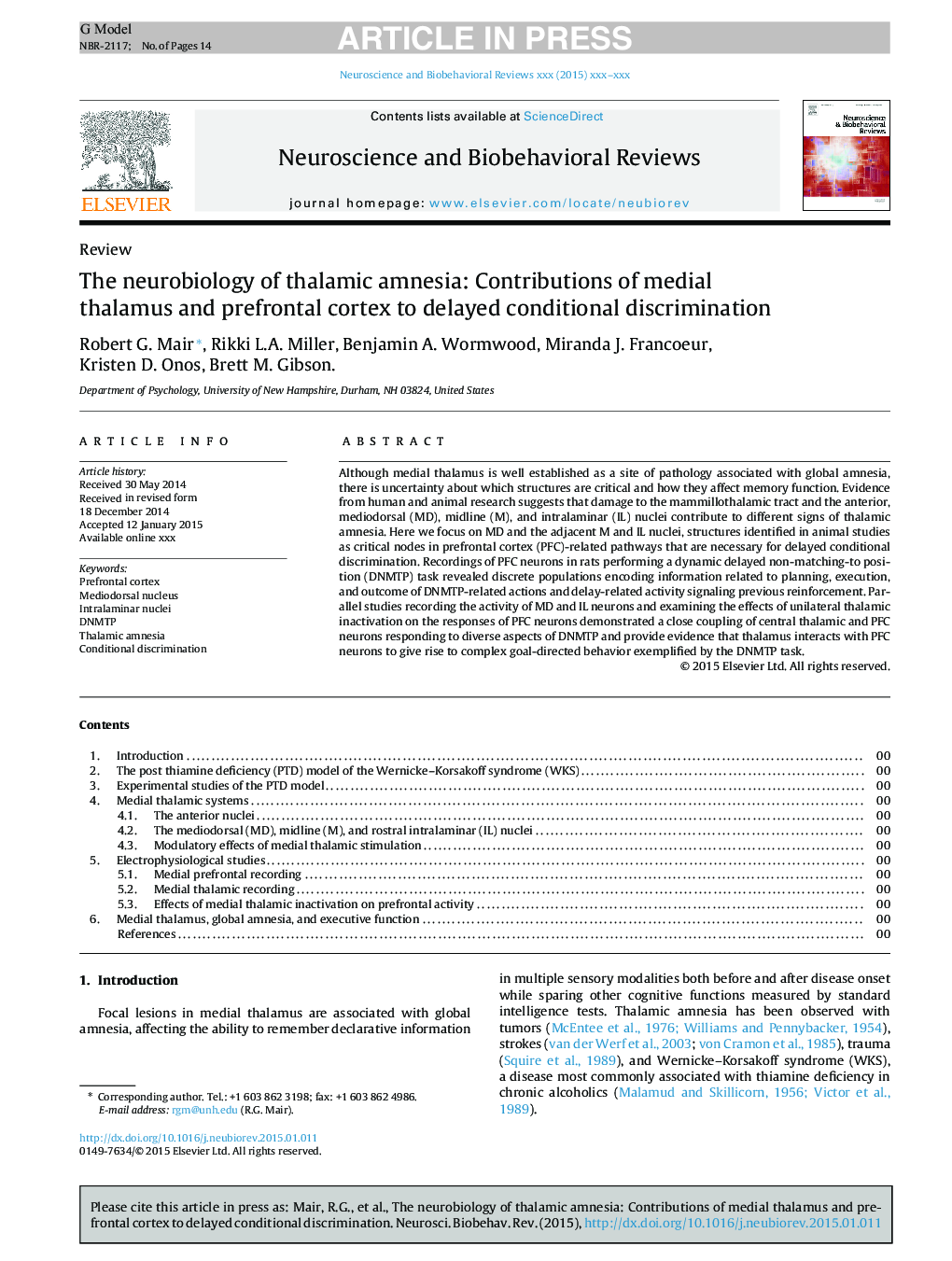| Article ID | Journal | Published Year | Pages | File Type |
|---|---|---|---|---|
| 7303460 | Neuroscience & Biobehavioral Reviews | 2015 | 14 Pages |
Abstract
Although medial thalamus is well established as a site of pathology associated with global amnesia, there is uncertainty about which structures are critical and how they affect memory function. Evidence from human and animal research suggests that damage to the mammillothalamic tract and the anterior, mediodorsal (MD), midline (M), and intralaminar (IL) nuclei contribute to different signs of thalamic amnesia. Here we focus on MD and the adjacent M and IL nuclei, structures identified in animal studies as critical nodes in prefrontal cortex (PFC)-related pathways that are necessary for delayed conditional discrimination. Recordings of PFC neurons in rats performing a dynamic delayed non-matching-to position (DNMTP) task revealed discrete populations encoding information related to planning, execution, and outcome of DNMTP-related actions and delay-related activity signaling previous reinforcement. Parallel studies recording the activity of MD and IL neurons and examining the effects of unilateral thalamic inactivation on the responses of PFC neurons demonstrated a close coupling of central thalamic and PFC neurons responding to diverse aspects of DNMTP and provide evidence that thalamus interacts with PFC neurons to give rise to complex goal-directed behavior exemplified by the DNMTP task.
Related Topics
Life Sciences
Neuroscience
Behavioral Neuroscience
Authors
Robert G. Mair, Rikki L.A. Miller, Benjamin A. Wormwood, Miranda J. Francoeur, Kristen D. Onos, Brett M. Gibson.,
